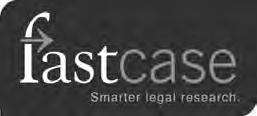
8 minute read
Inhale, Exhale, Change Your Life, by Caitlin Dillon
Inhale,Exhale,
Change Your Life.
By Caitlin Dillon
You have 25,000 opportunities per day to improve your baseline of health and well-being. It doesn’t require a gym membership, exercise equipment, or counting calories. It’s free, accessible 24/7/365, and it’s something you have been doing your whole life, likely with little awareness of the profound effects it has on your everyday biological function. Ths opportunity is your breath. If this seems like an underwhelming answer, you’re not alone. You may be asking yourself, I’ve been breathing my whole life, why should I change how I breathe or learn how to breathe better? For starters, COVID-19 is a good motivator. COVID-19 attacks your lungs and respiratory system, inhibiting your ability to breathe. A stronger respiratory system, combined with the use of safety protocols and guidelines may provide an extra line of defense or a quicker recovery, with positive side effects such as lessened feelings of anxiety or stress.1 But the journey of breathwork is far more powerful than that; adjustments to the way we inhale and exhale have the potential to transform who we are as individuals.
It’s hard to know where to start with breathing, since it’s more or less an automated function that’s controlled by the brain. However, a good place to start is simply by breathing through your nose, day and night. James Nestor, in his new book, Breath: The New Science of a Lost Art took a deep dive into breathwork and the history of breathwork, speaking to leading experts on the subject. The nose is designed to breathe, and according to Dr. Jayakar Nayak of the Stanford Department of Otolaryngology Head and Neck Surgery Center, the nose is “the gatekeeper of our bodies, pharmacist to our minds, and weather vane to our emotions” (Nestor, 2020, p. 45). The nose has a complex built-in filtering system that purifies he air that enters our body before it travels to our lungs.
When you breathe, molecules of air enter the nose at five miles per hour, fist traveling through the turbinates, or nasal concha, that are lined with tissue covered in a mucous membrane. Ths membrane warms the air to body temperature as it filters out harmful pollutants or particles that could cause issues if they traveled to the lungs. Ths is effectively our body’s fist line of defense against infection. The mucus membrane, aided by cilia, moves along at half an inch per minute, moving the irritants down the throat and into the stomach. The cilia keep pushing inward and down at about 16 beats per minute, no matter the position of your nose. (Nestor, 2020, p. 45). Most importantly, nasal breathing produces minute amounts of nitric oxide. When nitric oxide is inhaled through the nose and travels into the lungs, it helps to increase “arterial oxygen tension,” which increases the capacity of the lungs to absorb oxygen. In addition, nitric oxide helps reduce blood pressure, maintain homeostasis, and aids in immune defense.2 Each anatomical section of the nose is designed to heat, clean, slow, and pressurize air to allow for more efficit oxygen extraction. Ths is why nasal breathing is more efficit and healthy for our bodies. Conversely, mouth breathing causes a whole host of issues, including sleep apnea, snoring, fatigue, dental hygiene issues, decreased productivity, and even craniofacial alterations over time.3
Allergies and asthma notoriously alter and affect the way we breathe. Spring in New Mexico is the prime season for off he charts pollen counts and wind storms, exacerbating allergies and asthma. If the nasal cavity becomes congested due to allergies, airflw decreases, and bacteria flurishes, leading to infections and colds, and more congestion. It is at this moment, that we switch to mouth breathing, making the problem worse (Nestor, 2020, p. 7). Allergy shots, nasal decongestants, and steroids can provide temporary relief, however, there are ways to unblock your nose through better breathing mechanics.
The Buteyko Method was developed in 1952 by Ukrainian Dr. Konstantin Pavlovich. It is a method designed to improve functional breathing patterns, and prevent chronic overbreathing. The Buteyko Method uses a series of exercises to decongest the nose, and return to nasal breathing, improving your overall health. The method has been revived by Patrick McKeown and his book, The Oxygen Advantage, and the Buteyko Method has been effective for individuals with asthma and chronic allergies.4 Ths method retrains the body to breathe in line with its needs. “Functional breathing involves breathing in and out through the nose. The breath is light, regular, effortless with the primary movement from the diaphragm.”5
Aside from the health benefits, improved breathing mechanics can have a profound impact on athletic performance. The Bohr Effect was discovered in 1904 by Danish physiologist Christian Bohr. Bohr studied respiration; he “knew that oxygen was the cellular fuel and that hemoglobin was the transporter...but Bohr didn’t know why this exchange
took place” (Nestor, 2020, p. 75). What Bohr discovered was fascinating, and to use a legal analogy, “in some ways, carbon dioxide worked as a kind of divorce lawyer, a go-between to separate oxygen from its ties so it could be free to land another mate”(Nestor, 2020, p. 76). Muscles that produce more carbon dioxide attract more oxygen. Bohr also found that “carbon dioxide had a profound dilating effect on blood vessels, opening these pathways so they could carry more oxygen-rich blood to hungry cells” (Nestor, 2020, p. 75).
When we exercise, we inhale oxygen, and exhale carbon dioxide. Brian Mackenzie and his team at SH//FT have been experimenting with nasal breathing and breath control as a means of improving resilience and enhancing performance for several years. His training programs implement nasal breathing and proper breathing mechanics to increase carbon dioxide tolerance levels, teaching the pulmonary system to operate more efficitly. Heavy breaths through the mouth during exercise causes your body to unload too much carbon dioxide too quickly. Ths interrupts the flw of blood to the muscles, and decreases efficit delivery of oxygen. In contrast, nasal breathing allows athletes to get the same amount of oxygen without working as hard. Nasal breathing also promotes better functional movement and stability because nasal breathing during exercise demands that you breathe deeper and access the diaphragm, promoting stable functional movement patterns that can decrease injury. Adapting to nasal breathing during exercise is a challenging and humbling task requiring patience and focus, but the practice is well worth the rewards in performance and recovery.6
Nasal breathing can have a profound effect on your state, or how you feel at any given moment. When you breathe through your nose you are in a more parasympathetic state, or the rest and digest state. Conversely, when you breathe through your mouth, you activate your sympathetic nervous system, otherwise known as “fiht or fliht.” It doesn’t matter if you are being chased by a bear or are engaged in intense litigation, the physiological reaction of your body is the same. The sympathetic and parasympathetic signals travel through the body on two branches of the vagus nerve. The parasympathetic and sympathetic sides are operating continually most of the time, but one side may take control depending what situation you fid yourself in. Conscious breathwork can act as a wedge, meaning you can manipulate your state through breathwork, unlocking the ability to activate your parasympathetic side in stressful situations.7 You can choose your physiological response. Techniques such as the Wim Hof method or Pranayama upregulate your system, while Box Breathing or Alternate Nostril Breathing (Nadi Shodhana) downregulate your system. The ability to consciously control your state is a way to improve your response to stress and increase resilience.
Carbon dioxide is the metabolic stress messenger of the body.8 When you downregulate, there are higher levels of carbon dioxide in your blood and pulmonary system. When you upregulate into the sympathetic state, there are lower levels of carbon dioxide. New research suggests that physiological reactivity correlates with emotional reactivity. A recent study conducted by the Health and Human Performance Foundation and California State University Fullerton found that “people with higher carbon dioxide tolerance tests had lower in-the-moment anxiety, while those with lower carbon dioxide tolerance tests had higher in-the-moment anxiety.”9 New treatment programs to address panic disorders focus on reducing terrorizing symptoms by improving breathing to reduce hyperventilation. Hyperventilation is associated with abnormally low levels of carbon dioxide, and this treatment has proven more effective than traditional cognitive behavioral therapy in some instances.10 Improving your carbon dioxide tolerance makes you more resilient to stress, which allows you to make better decisions in the courtroom and in your life.
Changing habits starts with awareness. Be aware of your breath and how you breathe. Then begin to experiment. Breathe through your nose as much as you can during the day and night, try it while you walk, run, bike, work, and sleep. Be aware of how your breath is affected by your posture and movement. Are there areas where you can move better? Be aware of how your breath affects your state. Are there moments where you should breathe differently? What do you observe when you breathe differently? Slow breathing heals, even when practiced for just five to ten minutes a day. Take the time for yourself. How we breathe matters.
About the Author: Caitlin Dillon is a prosecutor in the State of New Mexico
___________________________
Endnotes
1 Coronavirus Recovery: Breathing Exercises. (n.d.). Retrieved September 22, 2020, from https://www.hopkinsmedicine.org/ health/conditions-and-diseases/coronavirus/coronavirus-recoverybreathing-exercises. 2 McKeown, P. and Macaluso M. (2017, March 9). Mouth Breathing: Physical, Mental and Emotional Consequences. Retrieved September 22, 2020, from https://www.oralhealthgroup.com/features/ mouth-breathing-physical-mental-emotional-consequences/. 3 McKeown, P. and Macaluso M. (2017, March 9). Mouth Breathing: Physical, Mental and Emotional Consequences. Retrieved September 22, 2020, from https://www.oralhealthgroup.com/features/ mouth-breathing-physical-mental-emotional-consequences/. 4 What is the Buteyko Method? (2020, September 15). Retrieved October 05, 2020, from https://buteykoclinic.com/the-buteykomethod/. 5 What is the Buteyko Method? (2020, September 15). Retrieved October 05, 2020, from https://buteykoclinic.com/the-buteykomethod/. 6 Panasevich, J. (2020). Nasal Breathing: The Secret to Optimal Fitness. Retrieved October 05, 2020, from https://health.usnews.com/ health-news/blogs/eat-run/articles/nasal-breathing-the-secret-tooptimal-fitness 7 Carney, S. (2020). Chapter 5: Breathe Out. In The Wedge: Evolution, Consciousness, Stress, and the Key to Human Resilience. Denver, CO: Foxtopus Ink. 8 Learn about your tolerance to Carbon Dioxide with a simple breath test. (2020, July 09). Retrieved October 05, 2020, from https:// shiftadapt.com/breath-test-calculator/ 9 Research - HHP-Foundation. (n.d.). Retrieved October 05, 2020, from https://www.hhp-foundation.org/research. 10 Southern Methodist University. (2010, December 22). New breathing therapy reduces panic and anxiety by reversing hyperventilation. ScienceDaily. Retrieved October 5, 2020 from www. sciencedaily.com/releases/2010/12/101220200010.htm






